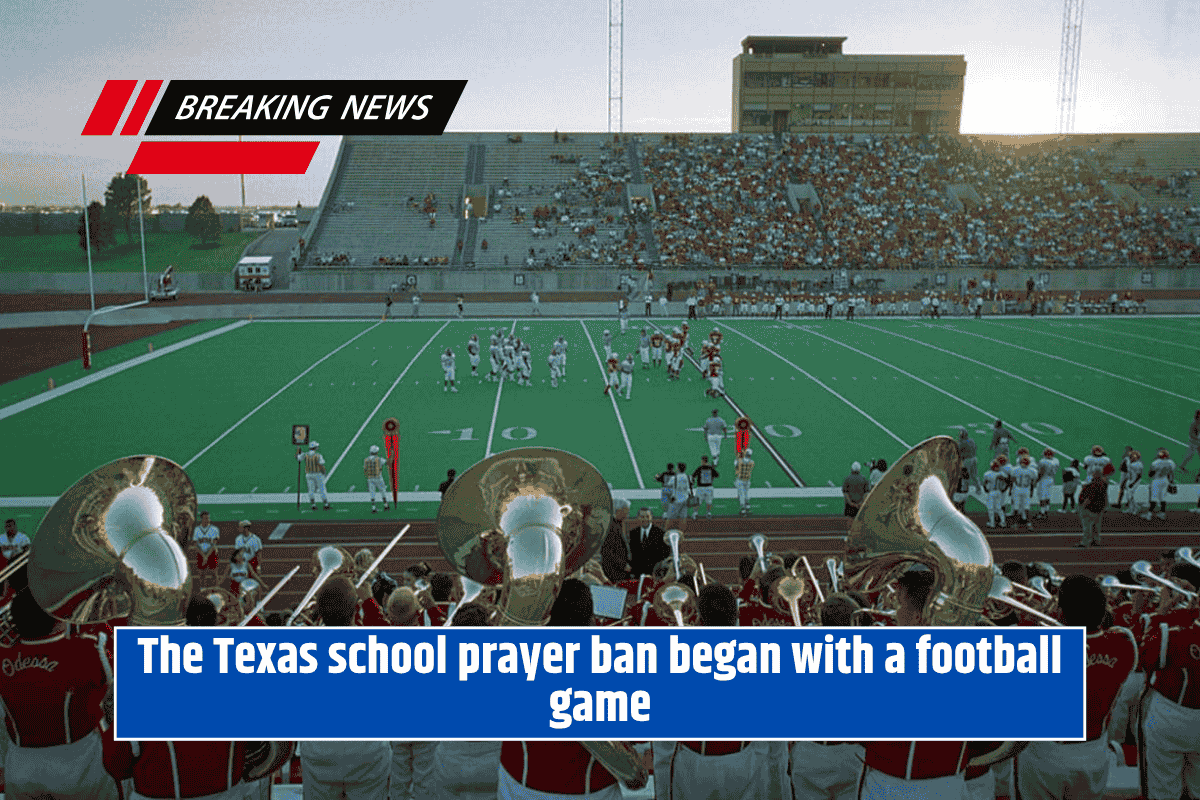In the heart of the Permian Basin, the pride for three key elements—oil, faith, and football—runs deep within the community. For many residents of West Texas, these pillars form the foundation of their identity. Texans, in general, are known for their intense love for high school football, making this passion a common bond across the state.
The Tradition of Pregame Prayer in Texas High School Football
For decades, a tradition of holding pregame prayers before high school football games was a common practice in Texas. These prayers were not seen as a request for victory but rather a way to ensure the safety and well-being of the players.
The prayers were led by students and took place without any significant issues for many years. This practice was deeply rooted in the culture of Texas, where football and faith often go hand in hand.
The Controversy That Sparked National Attention
However, in the early 2000s, a controversy arose that would bring attention to the role of prayer in public school events. The incident took place in Santa Fe, Texas, where a student-led prayer was broadcast over the stadium loudspeakers during a high school football game.
Since the game was a school-sponsored event, and school equipment was being used, this raised concerns about the separation of church and state.
Why the Prayer Broadcast Matter
The issue at the heart of the controversy was whether broadcasting a prayer over public address systems during a school event violated the First Amendment’s Establishment Clause. This clause prohibits government entities from endorsing or promoting any particular religion.
The Santa Fe incident quickly became a national news story and sparked debates across the country. The controversy ultimately led to a lawsuit filed by two families, a Catholic family and a Mormon family, claiming that the prayer was a government endorsement of religion.
Santa Fe Independent School District v. Doe (2000)
The case, Santa Fe Independent School District v. Doe (2000), was significant enough to reach the U.S. Supreme Court. In a landmark ruling, the Supreme Court determined that the prayer, even though student-initiated, violated the Establishment Clause of the First Amendment.
The Court’s decision was clear: public schools could not sponsor or endorse religious activities, including broadcasting prayers at school functions like football games and graduations.
The Impact on Religious Practices in Schools
The ruling had far-reaching implications. As CNN reported, the Supreme Court’s decision effectively banned prayer at public school events, even if it was led by students. This decision shaped the way religious practices were handled in schools across the country, especially in public institutions.
The two families who filed the lawsuit argued that the school’s actions amounted to an endorsement of religion, a clear violation of the constitutional separation of church and state.
Religious freedom remains a fundamental right in the United States. However, the ruling in this case highlighted the complex balance between individual religious expression and government endorsement of religion.
While people are free to practice their faith in their personal lives, the ruling set a legal precedent that prayer in public school settings, particularly at school-sponsored events, must remain private and voluntary.
The Enduring Legacy of the Case
The Santa Fe case has become a touchstone in discussions about religion in public schools. It is frequently referenced in court cases and debates on the topic of religious expression in public spaces. The case remains a reminder of the ongoing tension between religious freedom and the constitutional principle of separation of church and state.
In the end, the ruling has had a lasting effect on how schools across the nation approach the inclusion of religious practices in public settings. While the decision was controversial for many, it solidified the legal understanding that public schools, as government entities, must remain neutral in matters of religion.
